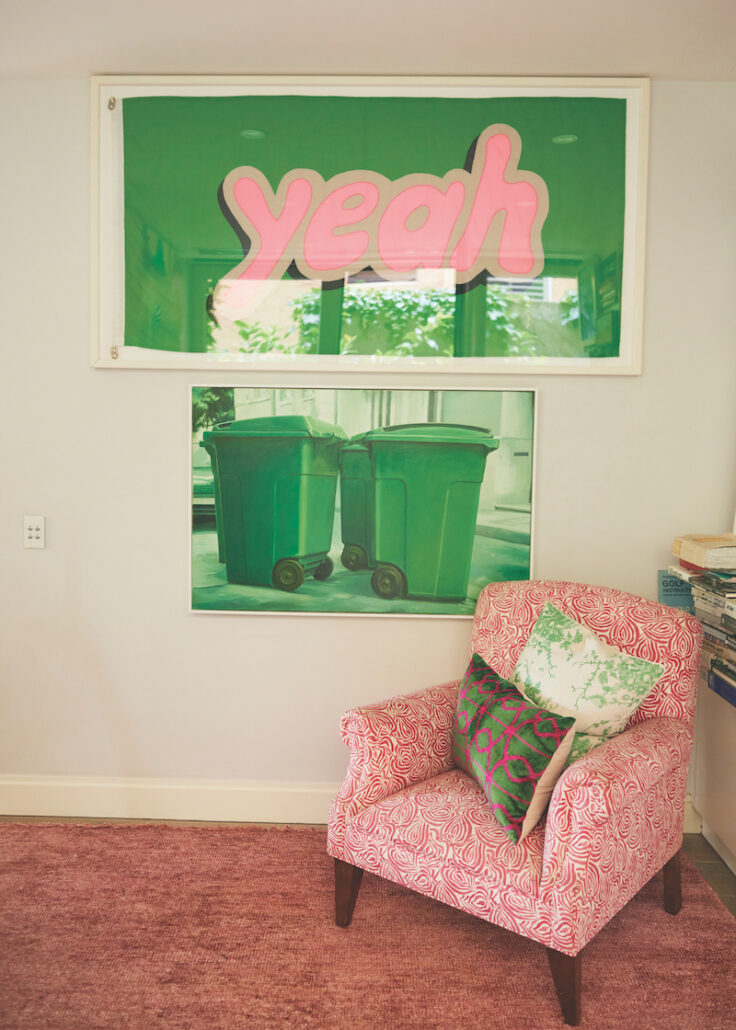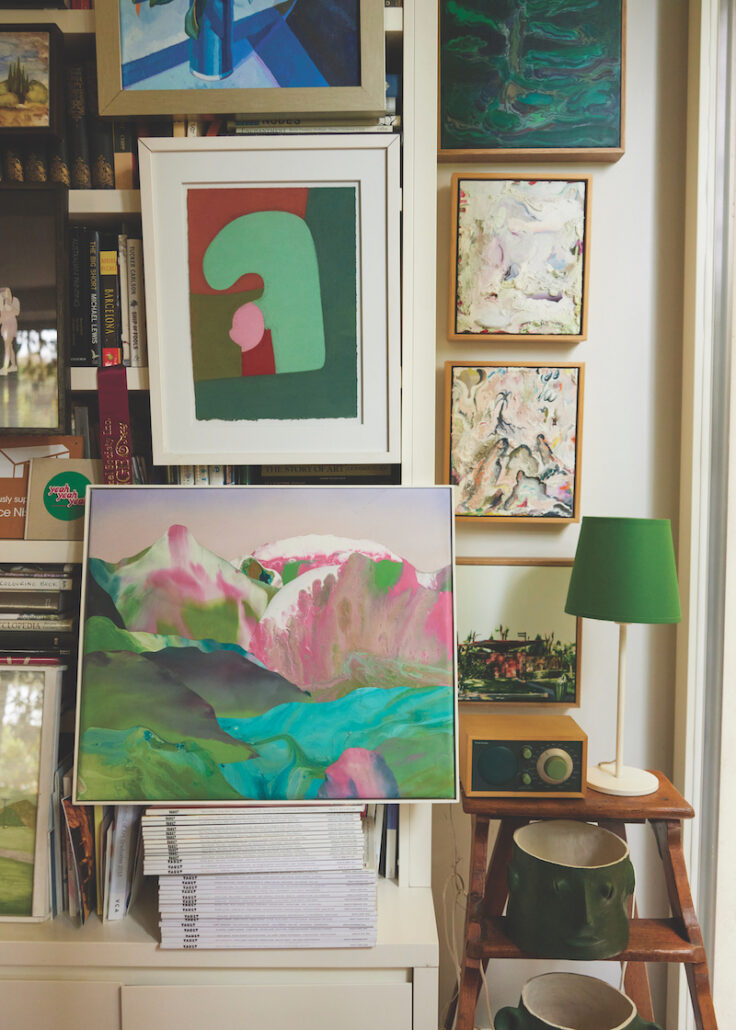/ When Hall and Edwards met in 2001, one of the rituals of their relationship was attending galleries together. /
Walking through the opulent, yet understated, communal hallway towards Mandy Hall and Nick Edwards’ abode, one can’t help but admire two especially expansive works on display: to the left, a work on paper by David Palliser, and to the right, a photograph by artist Simon Terrill. These pieces offer an enticing glimpse of what’s to come behind the door of their full-floor ground-level apartment, a testament to over two decades of passion-driven collecting and continual support for emerging Australian artists.
Hall, a former art teacher, has a long-abiding love for the arts. In the early days of their courtship, which began when Hall and Edwards met in 2001, one of the rituals of their relationship was attending galleries together. Theirs is a blended family, with four children between them; this, coupled with the demands of their respective careers, meant that Saturday afternoons were often the only time they were available for these gallery-hopping dates, after the children’s extracurricular activities had finished for the day.
One of their first joint purchases was in 2002 of the artist Bradd Westmoreland at Crossley and Scott Gallery. Westmoreland, a well-established Australian artist, has exhibited regularly in Melbourne and Sydney since 1997. Hall says that, to date, “we have 17 works by this artist or maybe more. He now shows at Niagara Galleries. Whenever there’s a show, we buy a work. We have visited his studio as well… the first piece we bought by Bradd was on opening night and we were introduced to him, other artists and James Mollison [former director of the National Gallery of Victoria] and became kind of hooked.” This is a counter-intuitive practice for the couple, as they often only buy the work of artists early in their careers.
As you enter their apartment, the neutral construction allows for a maximalist approach to decor, as evident by a sprawling array of art, with every surface, vertical or horizontal, making way for a story to tell. A Caleb Shea can be seen through a window and another on the terrace, and a floor-to-ceiling Benjamin Armstrong sculpture from the Conjurers series in the living room corner. A Sam Martin abstract painting on hessian coffee bags marks the entrance of Hall’s study — from a distance, due to its textural nature, giving the impression of a handwoven tapestry. The study itself features a seemingly banal but clever image of green garbage bins by Stephen Bush: it appears to reference a quintessential part of suburban life. A John Campbell framed flag saying ‘Yeah’ hangs directly above the Bush piece.
Even the bookshelf is layered with works by artists such as Jess Johnson, Noel McKenna and Richard Lewer, to name but a few. Hall says of their collecting that “it is hard to describe really. It speaks to the highly addictive nature of collecting and when the passion strikes it becomes a consuming diversion. It’s fuelled by conversations with other people, and we quickly found our way into a lot of galleries, artist-run spaces and developing connections with artists.”
/ What every piece in this house represents is a time and a place, a conversation, something we did together. / MANDY HALL
Hall stresses the importance, to the both of them, of being on the same page, stating that otherwise collecting would be too challenging. When prodded about favourite works, the couple, quite surprisingly, don’t shy away from responding. Hall says that hers is “a Tomislav Nikolic, it’s a little red work that sits in the hallway next to the kitchen. Nick and I have had a lifelong love of Rothko and to me it speaks to that abstract expressionism we particularly like”. Edwards in turn loves “a photograph of some graffiti by Dr Kiron Robinson.”
Hall chimes in, saying, “Years back Kiron had a resident studio at the old Gertude Street. We used to hang out there every Saturday afternoon. At the upstairs studio one of the residents had a show…we bought a lot of work that way.”
One must wonder — were there any disagreements on their collecting journey? Hall cites a work by photographer Paul Knight that Edwards disliked. It’s a photograph, of a man pushing down a woman in an ostensibly uncomfortable position. The compromise? It’s relegated to the laundry.
As for the future, the couple will continue to buy and enjoy artwork. Over time they have donated works to institutions and acknowledge there’s no curatorial premise to their purchases. It’s based on their affinity with the work, though it must be noted that landscapes and abstractions feature prominently across their home. As Hall explains, “what every piece in this house represents is a time and a place, a conversation, something we did together.
Above: Edwards and Hall enjoy a moment of mirth in the midst of their colourful collection: at left a Bradd Westmoreland and at right a Samson Martin. Courtesy: Mandy Hall and Nick Edwards.





